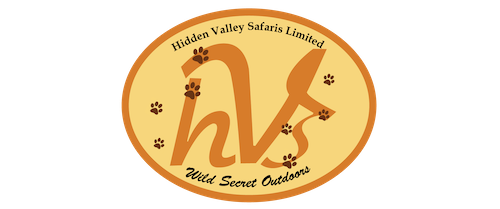Mount Kilimanjaro Frequently Asked Questions
MARANGU | MACHAME | SHIRA | RONGAI
Although you can trek Kilimanjaro any time of year, June through October and December through March are the better times. Other months fall in the rainy season, which makes for a less pleasant trip.
Yes. Ice and snow can be found year-round on the mountain’s upper reaches. There are massive glaciers, ice fields, and towering walls of ice that blaze in the equatorial sun. While the glaciers have recently receded, probably due to global warming, they remain, for now, an overpowering and unforgettable sight.
On our trips over 98% of trekkers make it to the top. Yet, of all people who attempt Kilimanjaro every year, fewer than half make it to the top. The difference? We use a sensible and gradual approach suited to proper acclimatization. We provide plenty of good food, clean water, and warm comfortable shelters. Plus, our skill, experience, and attention tosafety build real confidence in our trekkers. It is so much easier to summit when you are well fed, well rested, healthy, and in good hands.
Our minimum age is sixteen as part of a family group, including one parent.
Altitude sickness is a combination of symptoms that are sometimes experienced above 10,000 feet (3,050 meters) in elevation. At higher elevations, just about everyone experiences some symptoms such as occasional headaches, shortness of breath, or mild nausea. These symptoms are easily treated with rest, hydration, and over-the-counter medications. Less frequently, people may experience more serious symptoms that can require more intensive treatment such as oxygen or immersion in a pressurized bag, or even evacuation. (We are equipped and prepared to treat all of these symptoms.)
Get in moderate to good physical condition before you start your trip. Drink lots of water. Avoid diuretics such as caffeine or alcohol at high elevations. And consult with your physician about preventive medicines such as Diam-ox. Most important: go slow. Gradual adjustment to altitude is the best medicine. We design our trips so the mountain is approached at a gradual enjoyable pace. We recommend taking at least 7 days to ascend the mountain. Additionally, we recommend one to two extra days of acclimatization before the trek.
Usually, you will experience every season: summer, winter, spring, and fall, on Kilimanjaro. The trek begins in a warm tropical forest and then ascends to a cool plateau alive with wildflowers. Higher still, the vegetation gets sparse and the air takes on an autumnal chill. Near the top, you find snow, ice, and arctic cold. At the summit, it can get as cold as 0 degrees Fahrenheit. Obviously, you need to bring a wide range of clothing.
Good sturdy hiking boots. Winter and summer clothing. A frame-less pack, sleeping bag, water bottle, and personal items. (We provide a complete packing list well before you depart.) You do not need any technical climbing equipment.
Kilimanjaro is a strenuous adventure, but you don’t have to be an elite athlete. Anyone in good health, with a reasonable degree of physical conditioning and a determined attitude can make it to the top. No climbing skills are required. Even the most challenging portions are still a hike (a steep hike, but a hike nonetheless.) No ropes or technical gear are involved. It is recommended that you be able to jog for five miles or for 10,000 meters without difficulty. It is a good idea to have followed a regular routine of aerobic exercise at least 4 to 6 months before the trek, but neither age nor physical disability need be a deterrent. We provide a training program and training advice to our guests. Our guides have taken people from age 15 to 78, and people with severe disabilities. Determination is the critical factor.
Not on our trips. We hike across the haunting open spaces on the western side of the mountain on seldom-traveled routes that provide a more authentic wilderness experience, where few, if any people are encountered along the way. In contrast, most people attempt the mountain from the Marungu or “Coca-Cola” route. This route is a crowded, noisy, and dirty affair. Although less than half the throng ever make it to the top, it can still be busy on the summit at times.
You get what you pay for. We don’t compromise in the crucial areas of quality, care, and skill. Nor do we compromise in the area of ethics. We provide a high-quality experience by selecting more scenic, less crowded routes, by providing ample porters, comfortable shelters, and good food. We provide extra care through our first aid and rescue skills, extensive safety equipment, and well planned health and safety protocols. We use only highly skilled guides and porters, and we care for them. We pay good wages. We make sure our guides and porters have comfortable and safe shelter, nutritious food and manageable loads. And we ensure that they are outfitted with proper clothing. Finally, we pay our park fees, carry out all refuse, and follow all of the park rules and regulations. These are the reasons why Hidden Valley Safaris is recommended by the Kilimanjaro Porters Assistance Project.
We do also use the right tools for the job
Oximeters
PAC, oxygen
Stretchers
Customised constant monitoring system
Communications & backup
Supplementary oxygen
Comprehensive first aid kits
Customised evacuation stretchers
Altitude sickness assessment scorecards as a supplementary assessment tool
Portable Altitude Chamber
Trip Leaders and Guides monitor you daily with pulse oximeters and altitude sickness scorecards. If evacuations are required then supplementary oxygen (for high altitude trips) and custom built stretchers are on hand.
Post trip: your feedback is essential and combined with proper guide and crew debriefings and your input we expect our trips to continue to develop and improve
All climbs Mountaineers Expeditions operate require that our clients take out Flying Doctors or Emergency Evacuation cover. Almost all trips, by default, have this cover built into the cost for no nonsense evacuation support in remote zones.
